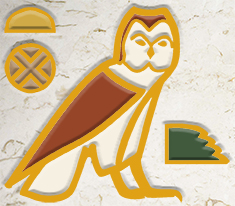
Gods of Ancient Egypt: Sakhamat – Sekhmet
The episode provides an extensive overview of Sakhamat (Sekhmet), an ancient Egyptian goddess associated with power, war, destruction, healing, and protection. Below is a summary:
Origins and Mythology: Sakhamat, derived from “sxm” (power) and “t” (female), is a lioness-headed goddess linked to war, destruction, and healing. She is central to the myth of the “Destruction of Mankind,” where she punished humanity at Ra’s command but was pacified by drinking red-dyed beer, mistaking it for blood. This event is commemorated in the festival of drunkenness.
Appearance: Sakhamat is depicted as a lioness or a gold-skinned woman with a lioness head, sun disk headdress, and cobra uraeus. Her attire includes a broad collar and a sheer sheath dress, symbolizing youth and fertility.
Roles and Associations:
War and Protection: Patroness of pharaohs, she embodies duality as a war goddess and protector. Her destructive powers are bound by righteousness (Ma’at).
Healing and Medicine: Sakhamat controls disease demons (xAtyw) and patronizes physicians. Priests trained in her temples served as healers.
Tree Cults: She is linked to sacred groves and tree cults, alongside other goddesses like Hathor, Bastet, and Isis.
Worship Centers:
Memphis: Sakhamat was worshipped alongside Ptah and their son Nefertem. She absorbed the local goddess of Memphis.
Karnak: Hundreds of her statues were erected during Amenhotep III’s reign, and she was syncretized with Mut.
Other Sites: Temples and cults dedicated to Sakhamat existed in Kom el-Hisn, Abusir, and other locations.
Rituals and Festivals: Sakhamat was honored in rituals to protect against her “Seven Arrows” of pestilence, with amulets and menat necklaces used to appease her. The festival of drunkenness celebrated her pacification.
Historical Influence: Sakhamat’s cult persisted through various dynasties, including the Old Kingdom, New Kingdom, and Ptolemaic era, often protecting mortuary temples from dismantlement.
Sakhamat embodies a complex duality as a goddess of destruction and healing, deeply integrated into Egyptian mythology, religion, and royal patronage.


